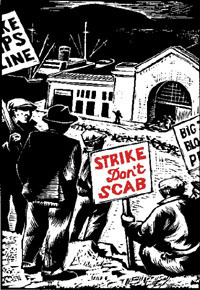|
|
|
|
|
|
Uber Is Using Fine Print To Control Its Drivers. But They Might Not Get Away With It.
Uber Is Using Fine Print To Control Its Drivers. But They Might Not Get Away With It.
http://thinkprogress.org/economy/2015/09/25/3705930/uber-nlrb-arbitration/
BY ALAN PYKE SEP 25, 2015 3:53PM
CREDIT: AP PHOTO/VINCENT YU
Disgruntled Uber drivers are taking their beef with the taxi-killing startup to the National Labor Relations Board (NLRB) in hopes of restoring hundreds of thousands of drivers’ ability to participate in suits against the company.
The legal team who won class status for a lawsuit against Uber earlier this month are hoping that the NLRB will invalidate mandatory binding arbitration clauses in the company’s contracts. When a judge granted the drivers’ request for a class action against the company three weeks ago, he caveated the ruling to limit the number of drivers who could participate.
For now, there are tens of thousands of drivers who failed to opt out of language in Uber’s contracts that commits them to resolving disputes in arbitration rather than in court. But if the NLRB rules that the arbitration clauses are unenforceable, and that ruling percolates up into the California court that’s hearing the class action, the California case would expand dramatically.
Those arbitration clauses are currently the only thing limiting the scope of the legal jeopardy that Uber faces. If they crumble, the very business model that’s made Uber so famous and so wealthy would be at risk of collapse. In the month since limited class status was granted in the California suit, another putative class-action suit was filed in Pennsylvania, illustrating how the battlefield Uber must defend is expanding rapidly.
Friday’s filing with the NLRB is an attempt to broaden the field even further. If the arbitration clauses are upheld, Uber predicts that as few as 15,000 drivers would be party to the California case. If they are struck down, the number could be more than ten times larger.
“Uber is using its fine print arbitration agreements containing class action waivers to prevent drivers from being included in the class action,” plaintiffs’ attorney Shannon Liss-Riordan told San Francisco Weekly. “As the NLRB has repeatedly held, these class action waivers are illegal under the National Labor Relations Act.”
But even if the NLRB agrees with Liss-Riordan and voids the California arbitration clauses, the decision will not guarantee that the number of drivers eligible for the class action will expand.
The NLRB isn’t the ultimate authority on this question for the purposes of federal lawsuits. One U.S. Court of Appeals has contradicted the NLRB’s rulings on arbitration language, finding that the Federal Arbitration Act overrides the National Labor Relations Act that empowers the NLRB to hear and decide cases like these. The NLRB’s view of arbitration clauses is therefore invalid in the three states governed by the Fifth Circuit.
But anywhere outside of Texas, Louisiana, and Mississippi, the board’s view of the contractual tactic Uber uses to limit its courtroom liability can still be enforced.
The Supreme Court generally waits for a conflict to arise between two different Courts of Appeals before considering whether or not it needs to adjudicate a dispute that’s causing the law to be enforced inconsistently around the country.
But functionally speaking, such a conflict exists today. Arbitration clauses that are inviolate from Biloxi to El Paso can be voided in the other 47 states. And if the NLRB rules in favor of drivers in this new case, and Uber loses an appeal of that decision in the Ninth Circuit, then the issue would be much more likely to draw the high court’s eye.
Taken together, the overlapping pile of different cases involving Uber drivers is a lot like a Rube Goldberg machine that uses absurdly complex mechanics to achieve a very simple task like cracking an egg. All these legal filings ultimately revolve around one question: Are drivers employees?
These suits claim that Uber classifies drivers as contractors but treats them like employees. The misclassification of workers that Uber is allegedly relying on can save a company thousands of dollars per person per year, and is rampant in the transportation industry. Contractors don’t get minimum wage protections, overtime, unemployment insurance, reimbursement for work expenses, and various other labor protections required for employees. Uber’s ability to sidestep those obligations where traditional taxi companies cannot is a major part of what’s enabled them to “disrupt” the car service economy.
Some entrepreneurs in the “gig economy” argue there should be a third category of employment relationship to match the inherently flexible nature of working in an on-demand capacity. But for the time being courts must decide which of the two core categories of working relationship Uber drivers belong to. If drivers had to be treated as employees, it might not kill the company outright — but it would certainly ding Uber’s runaway valuation by investors, which is reportedly as high as $50 billion today.
-

- Log in to post comments
- Printer-friendly version



